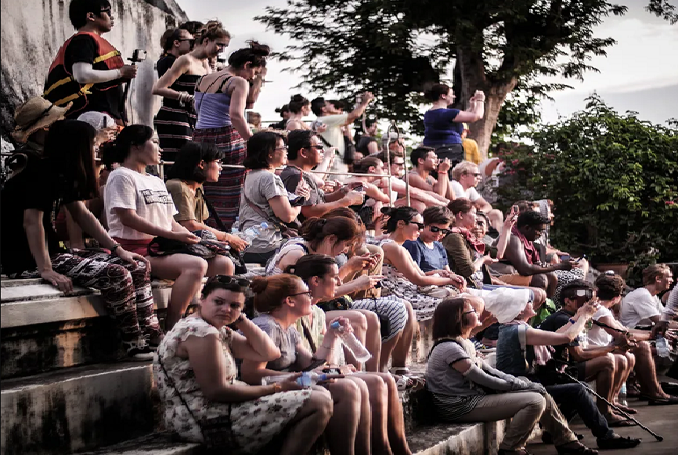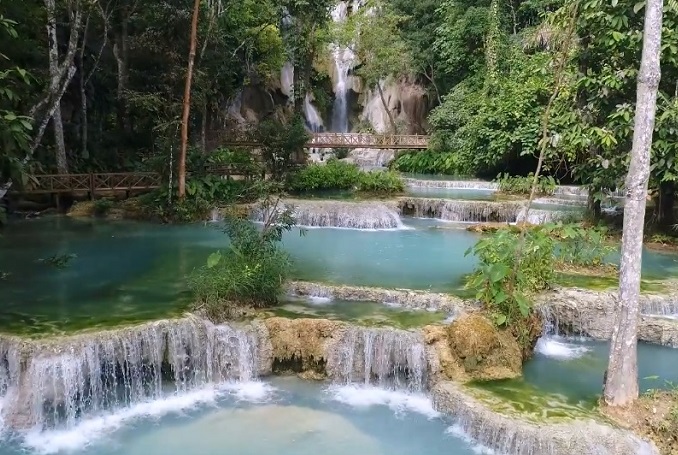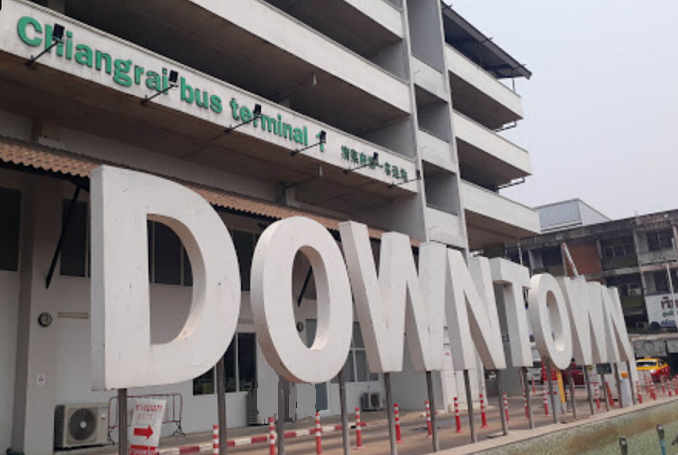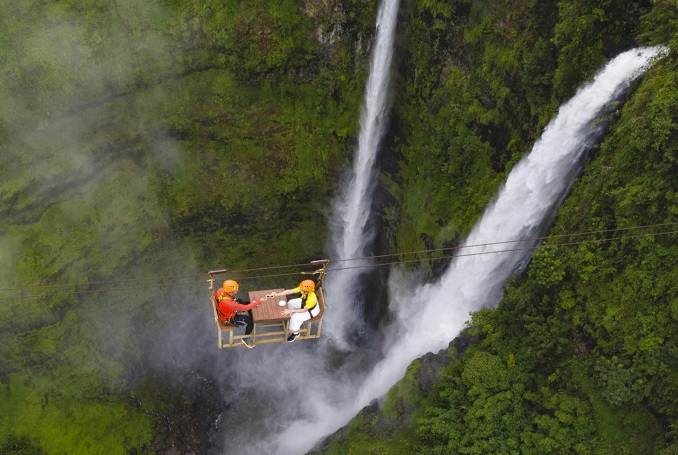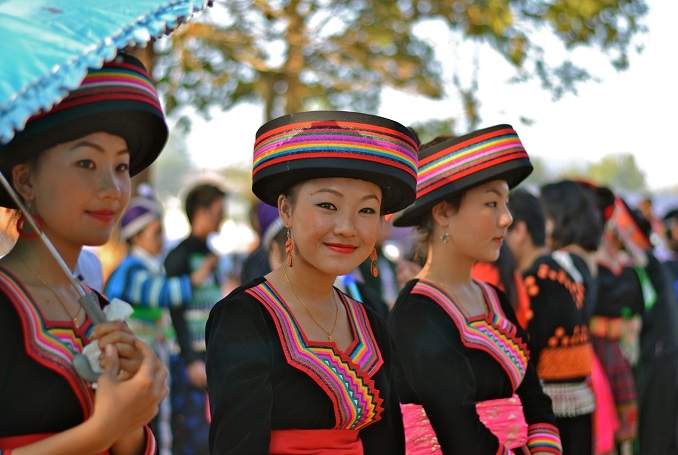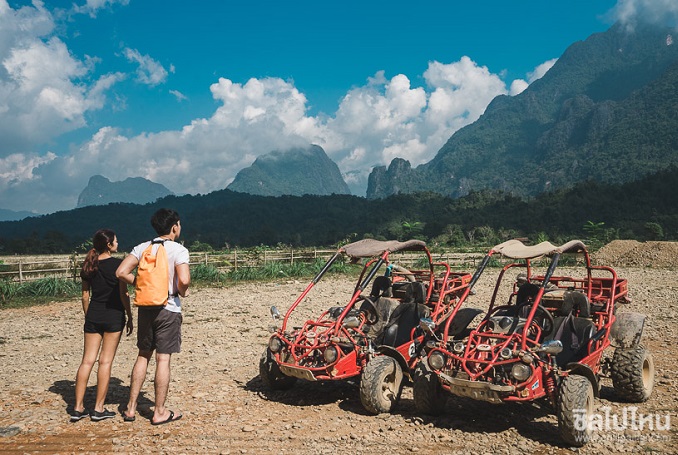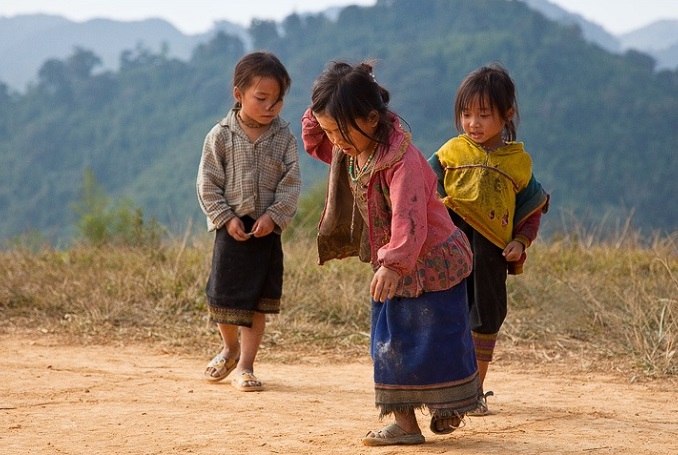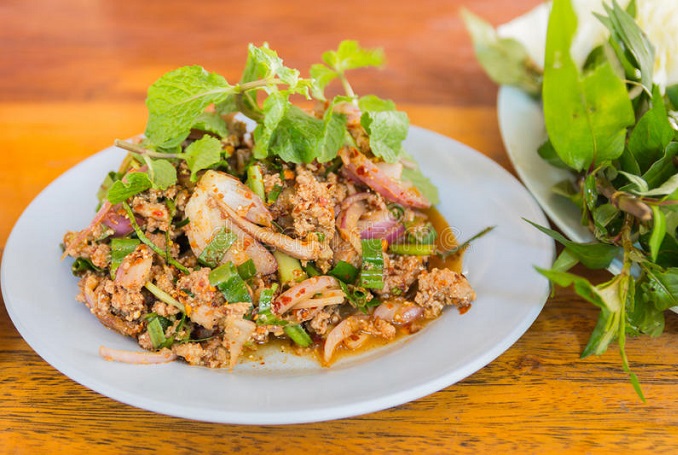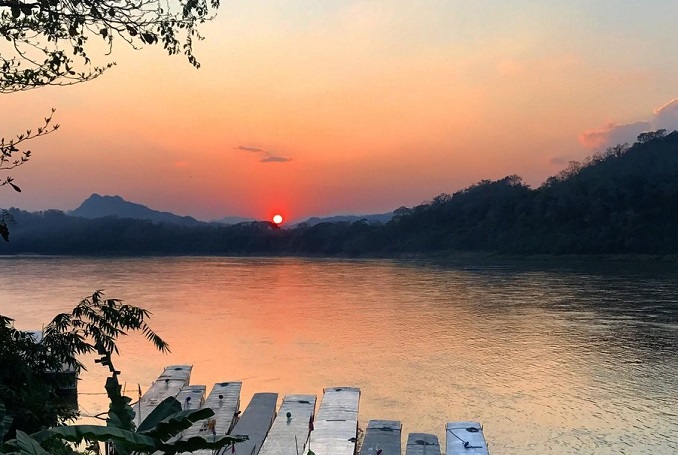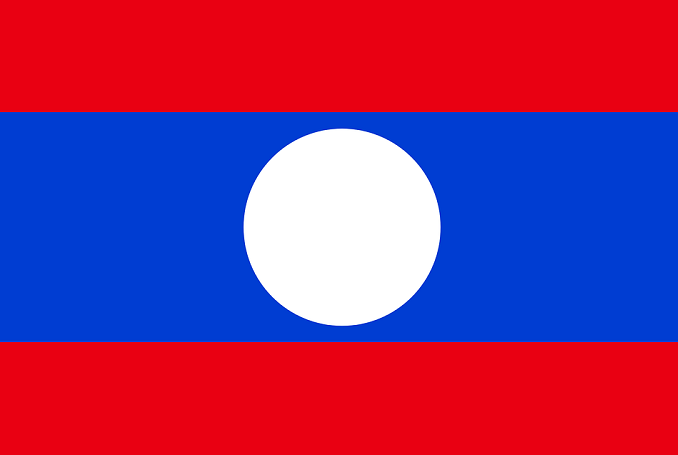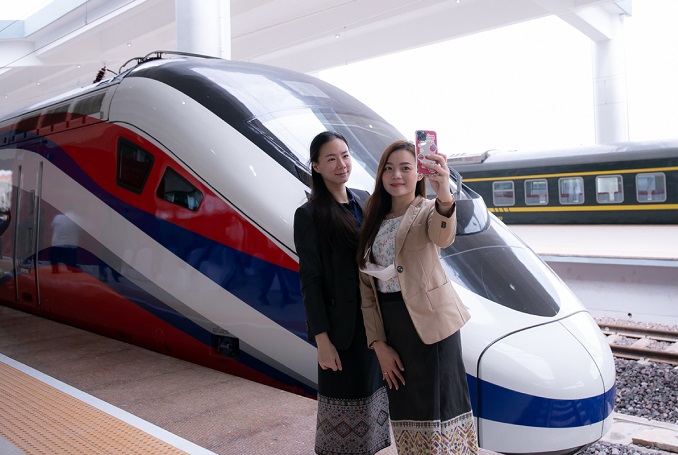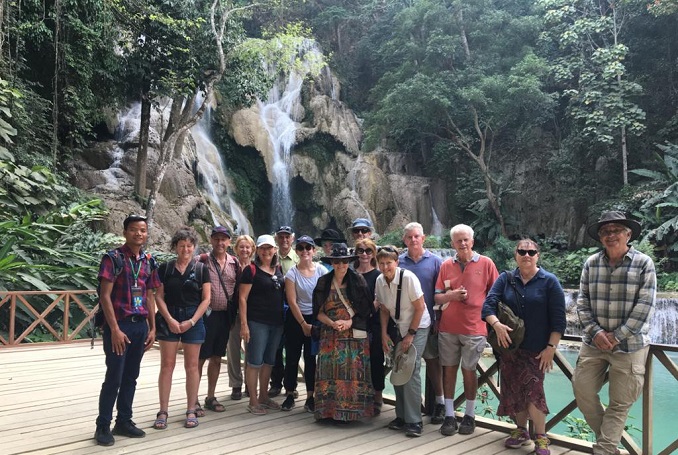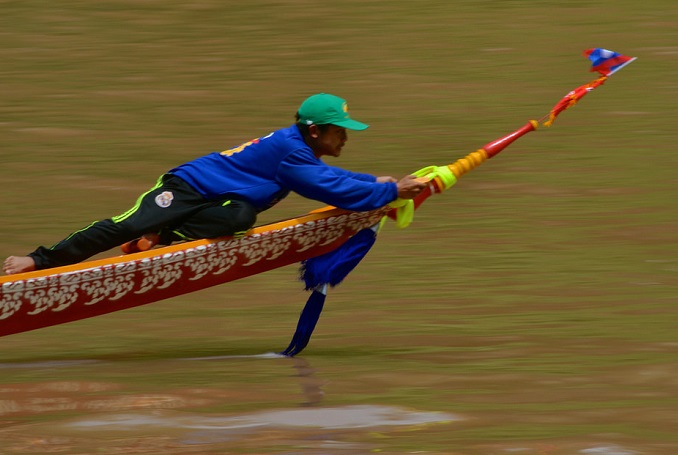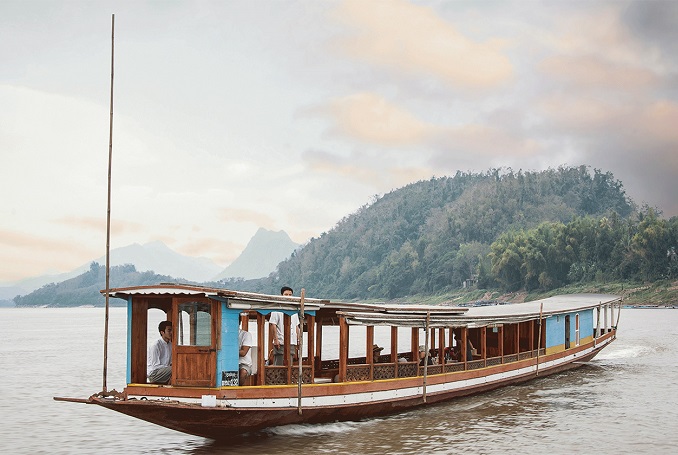History Of Laos
The ancestors of the Lao people were speakers of Southwestern Tai dialects that migrated from what is now southeastern China, specifically what is now Guangxi and northern Vietnam where the diversity of various Tai languages suggests an Urheimat. The Southwestern Tai languages began to diverge from the Northern and Central branches of the Tai languages, covered mainly by various Zhuang languages, sometime around 112 AD, but likely completed by the sixth century. Due to the influx of Han Chinese soldiers and settlers, the end of the Chinese occupation of Vietnam, the fall of Jiaozhi and turbulence associated with the decline and fall of the Tang Dynasty led some of the Tai peoples speaking Southwestern Tai to flee into Southeast Asia, with the small-scale migration mainly taking place between the eighth and twelfth centuries. The Tais split and followed the major river courses, with the ancestral Lao originating in the Tai migrants that followed the Mekong River.
Divergence and convergence
As the Southwestern Tai-speaking peoples diverged, following paths down waterways, their dialects began to diverge into the various languages today, such as the Lao-Phuthai languages that developed along the Mekong River and includes Lao and its Isan sub-variety and the Chiang Saen languages which includes the Central Thai dialect that is the basis of Standard Thai. Despite their close relationship, there were several phonological divergences that drifted the languages apart with time such as the following examples
Similar influences and proximity allowed for both languages to converge in many aspects as well. Thai and Lao, although separated, passively influenced each other through centuries of proximity. For instance, the Proto-Southwestern Tai *mlɛːŋ has produced the expected Lao /m/ outcome maeng (ແມງ mèng, /mɛ́ːŋ/) and the expected Thai /l/ outcome laeng (แลง /lɛːŋ/), although this is only used in Royal Thai or restricted academic usage, with the common form malaeng (แมลง /maʔ lɛːŋ/), actually an archaic variant. In slang and relaxed speech, Thai also has maeng (แมง /mɛːŋ/), likely due to influence of Lao.
Thai and Lao also share similar sources of loan words. Aside from many of the deeply embedded Sinitic loan words adopted at various points in the evolution of Southwestern Tai at the periphery of Chinese influence, the Tais in Southeast Asia encountered the Khmer. Khmer loan words dominate all areas and registers of both languages and many are shared between them. Khmer loan words include body parts, urban living, tools, administration and local plants. The Thai, and likely the Lao, were able to make Khmer-style coinages that were later exported back to Khmer. The heavy imprint of Khmer is shown in the genetics of Tai speakers, with samples from Thai and Isan people of Lao descent showing proof of both the Tai migration but also intermarriage and assimilation of local populations. Scholars such as Khanittanan propose that the deep genetic and linguistic impact of the autochthonous Khmer and their language indicates that the earliest days of Ayutthaya had a largely bilingual population. Although evidence and research in Lao is lacking, major Lao cities were known to have been built atop existing Khmer settlements, suggesting assimilation of the locals. Isan and Lao commonly use a Khmer loan not found in Thai, khanong (ຂະໜົງ/ຂນົງ khanông, /kʰáʔ nŏŋ/), 'doorframe', from Khmer khnâng (ខ្នង, /knɑːŋ/), which means 'building', 'foundation' or 'dorsal ridge'.
Indic languages also pushed Thai and Lao closer together, particularly Sanskrit and Pali loan words that they share. Many Sanskrit words were adopted via the Khmer language, particularly concerning Indian concepts of astrology, astronomy, ritual, science, kingship, art, music, dance and mythology. New words were historically coined from Sanskrit roots just as European languages, including English, share Greek and Latin roots used for these purposes, such as 'telephone' from Greek roots τῆλε tēle, 'distant' and φωνή phōnē which was introduced in Thai as thorasap (โทรศัพท์, /tʰoː raʔ sàp/) and spread to Isan as thorasap (ໂທຣະສັບ/ໂທລະສັບ thôrasap, /tʰóː lāʔ sáp/) from Sanskrit dura (दूर, /d̪ura/), 'distant', and śabda (शब्द, /ʃabd̪a/), 'sound'. Indic influences also came via Pali, the liturgical language of Theravada Buddhism.
The effects of Khmer and Indic vocabulary did not affect all the Tai languages of Southeast Asia equally. The Tai Dam of northern Vietnam were shielded from the influence of the Khmer language and the Indic cultural influences that came with them and remain traditionally a non-Buddhist people. Although the Tai Dam language is a Chiang Saen language, albeit with a lexicon and phonology closer to Lao, the lack of Khmer, Sanskrit and Pali loan words makes the language unintelligible to Thai and Lao speakers
Lan Xang (1354—1707)
Taking advantage of rapid decline in the Khmer Empire, Phra Chao Fa Ngoum (ຟ້າງູ່ມ fȁːŋum) defeated the Khmer and united the Tai mueang of what is now Laos and Isan into the mandala kingdom of Lan Xang in 1354. Fa Ngoum was a grandson of the ruler of Muang Xoua (RTGS Mueang Sawa), modern-day Louang Phrabang. Lan Xang was powerful enough to thwart Siamese designs from their base at Sukhothai and later Ayutthaya.
Khmer, and Sanskrit via Khmer, continued to influence the Lao language. Since Fa Ngoum was raised in the Khmer court, married to a Khmer princess and had numerous Khmer officials in his court, a now-extinct speech register known as raxasap (ຣາຊາສັບ /láː sáː sáp/) was developed to address or discuss the king and high-ranking clergy. Khmer and Sanskrit also contributed many belles-lettres as well as numerous technical, academic and cultural vocabulary, thus differentiating the Lao language from the tribal Tai peoples, but pushing the language closer to Thai, which underwent a similar process. The end of the Lao monarchy in 1975 made the Lao raxasap obsolete, but as Thailand retains its monarchy, Thai rachasap is still active.
The 16th century would see the establishment of many of the hallmarks of the contemporary Lao language. Scribes abandoned the use of written Khmer or Lao written in the Khmer alphabet, adopting a simplified, cursive form of the script known as Tai Noi that with a few modifications survives as the Lao script.[18] Lao literature was also given a major boost with the brief union of Lan Xang with Lan Na during the reign of Xay Xétthathirat (ໄຊເສດຖາທິຣາດ /sáj sȅːt tʰăː tʰī lȃːt/) (1546–1551). The libraries of Chiang Mai were copied, introducing the tua tham (BGN/PCGN toua tham) or 'dharma letters' which was essentially the Mon-influenced script of Lan Na but was used in Lao specifically for religious literature. The influence of the related Tai Lan Na language was strengthened after the capitulation of Lan Na to the Burmese, leading many courtiers and people to flee to safety to Lan Xang.
Taking advantage of rapid decline in the Khmer Empire, Phra Chao Fa Ngoum (ຟ້າງູ່ມ fȁːŋum) defeated the Khmer and united the Tai mueang of what is now Laos and Isan into the mandala kingdom of Lan Xang in 1354. Fa Ngoum was a grandson of the ruler of Muang Xoua (RTGS Mueang Sawa), modern-day Louang Phrabang. Lan Xang was powerful enough to thwart Siamese designs from their base at Sukhothai and later Ayutthaya.
Khmer, and Sanskrit via Khmer, continued to influence the Lao language. Since Fa Ngoum was raised in the Khmer court, married to a Khmer princess and had numerous Khmer officials in his court, a now-extinct speech register known as raxasap (ຣາຊາສັບ /láː sáː sáp/) was developed to address or discuss the king and high-ranking clergy. Khmer and Sanskrit also contributed many belles-lettres as well as numerous technical, academic and cultural vocabulary, thus differentiating the Lao language from the tribal Tai peoples, but pushing the language closer to Thai, which underwent a similar process. The end of the Lao monarchy in 1975 made the Lao raxasap obsolete, but as Thailand retains its monarchy, Thai rachasap is still active.
The 16th century would see the establishment of many of the hallmarks of the contemporary Lao language. Scribes abandoned the use of written Khmer or Lao written in the Khmer alphabet, adopting a simplified, cursive form of the script known as Tai Noi that with a few modifications survives as the Lao script.[18] Lao literature was also given a major boost with the brief union of Lan Xang with Lan Na during the reign of Xay Xétthathirat (ໄຊເສດຖາທິຣາດ /sáj sȅːt tʰăː tʰī lȃːt/) (1546–1551). The libraries of Chiang Mai were copied, introducing the tua tham (BGN/PCGN toua tham) or 'dharma letters' which was essentially the Mon-influenced script of Lan Na but was used in Lao specifically for religious literature.[18] The influence of the related Tai Lan Na language was strengthened after the capitulation of Lan Na to the Burmese, leading many courtiers and people to flee to safety to Lan Xang.
Theravada Buddhism
Lan Xang was religiously diverse, with most of the people practicing Tai folk religion albeit somewhat influenced by local Austroasiatic animism, as well as the Brahmanism and Mahayana Buddhism introduced via the Khmer and Theravada Buddhism which had been adopted and spread by the Mon people. Although Lao belief is that the era of Lan Xang began the period of Theravada Buddhism for the Lao people, it was not until the mid-sixteenth century that the religion had become the dominant religion.
The earliest and continuously used Theravada temple, Vat Vixoun was built in 1513 by King Vixounnarat (ວິຊຸນນະຣາດ) (1500-1521). His successor, Phôthisarat (ໂພທິສະຣາດ) (1520-1550), banned Tai folk religion and destroyed important animist shrines, diminished the role of the royal Brahmins and promoted Theravada Buddhism. Phôthisarat married a princess of Lan Na, increasing contact with the kingdom that had long adopted the religion via contacts with the Mon people, a process that would continue when Phôthisarat's son assumed the thrones of Lan Xang and Lan Na.
With Theravada Buddhism came its liturgical language, Pali, an Indic language derived from the Prakrit. Many Pali terms existed alongside earlier Sanskrit borrowings or were Sanskritized, leading to doublets such as Sanskrit maitri (ໄມຕີ/ໄມຕຣີ /máj tiː/) and Pali metta (ເມດຕາ/ເມຕຕາ /mȇːt taː/), both of which signify 'loving kindness' although the Sanskrit term is more generally used for 'friendship'. The spread of Theravada Buddhism spread literacy, as monks served as teachers, teaching reading and writing as well other basic skills to village boys, and the Tai Noi script was used for personal letters, record-keeping and signage, as well as to record short stories and the klon (ກອນ /kɔːn/) poetry that were often incorporated into traditional folksongs
Lao Three Kingdoms period (1713—1893)
Despite the long presence of Lan Xang and Lao settlements along the riverbanks, the Khorat Plateau remained depopulated since the Post-Angkor Period and a long series of droughts during 13th—15th centuries. The Lao settlements were found only along the banks of the Mekong River and in the wetter northern areas such as Nong Bua Lamphu, Loei, Nong Khai, with most of the population inhabiting the wetter left banks. This began to change when the golden age of Lao prosperity and cultural achievements under King Sourignavôngsa (ສຸຣິຍະວົງສາ /sú lī ɲā ʋóŋ sǎː/) (1637-1694) ended with a successional dispute, with his grandsons, with Siamese intervention, carving out their separate kingdoms in 1707. From its ashes arose the kingdoms of Louang Phrabang, Vientiane and later in 1713, the Champasak. The arid hinterlands, deforested and depopulated after a series of droughts likely led to the collapse of the Khmer Empire, was only occupied by small groups of Austroasiatic peoples and scattered outposts of Lao mueang in the far north. In 1718, Mueang Suwannaphum (ສຸວັນນະພູມ Muang Suovannaphoum, /sú ʋán nāʔ pʰúːm) in 1718 in what is now Roi Et Province, was founded as an outpost of Champasak, establishing the first major Lao presence and the beginning of the expansion of Lao settlement along the Si (ຊີ /síː/) and Mun (ມູນ) rivers.[citation needed]
The bulk of the Lao, however, settled after 1778 when King Taksin, Siamese king during the Thonburi Period (1767—1782) conquered Champasak and Vientiane and raided Phuan areas for slaves, seizing the Emerald Buddha and Phra Bang (although the latter was eventually returned) and forcing some of the Lao across the river to settle in Isan. Louang Phrabang was spared most of the destruction by submitting to Siamese overlordship.[21] Although the kingdoms remained nominally autonomous, the Siamese demanded tribute and taxes, kept members of the respective royal houses as hostages to ensure loyalty and required the three Lao kings to come to the capital several times a year to hold an audience with the Siamese king. When the kingdoms revolted, the Siamese armies retaliated by rounding up entire villages, tattooing them to mark them as slaves and forced to settle what is now Isan, forced to serve as soldiers or manpower in corvée projects to build roads, to grow food, build canals or serve as domestics. The greatest population transfer occurred after the Laotian Rebellion by Chao Anouvông (ອານຸວົງ/ອານຸວົງສ໌, /ʔàː nū ʋóŋ/) in 1828 which led to the death of Anouvông and most of his family. The Siamese abducted nearly the entire population of Vientiane and its surrounding area and forced them to the right bank. Continued raids of people continued until the end of the nineteenth century.
In addition to forced transfers, many Lao were encouraged to settle in Isan, with some disillusioned princes granted lofty titles in exchange for loyalty and taxation, robbing the Lao kings of taxation and wealth as well as what little nominal authority they had left. This greatly expanded the Lao population of Isan and caused assimilation of the local peoples into the mix, a process that is occurring on a smaller scale even now. Siamese intervention paradoxically strengthened the Lao character of the region as the Siamese left the Lao areas alone as long as they continued to produce rice and continued to pay tribute. Direct Siamese rule did not extend past Nakhon Ratchasima, and the Lao mueang, whether paying their tribute directly to Bangkok or the remaining Lao kings and princes, were still nominally part of the separate kingdoms. Temples built in what is now Isan still featured the Tai Noi script on its murals and although Siam would intervene in some matters, daily administration was still left to the remaining kings and various Lao princes that served as governors of the larger mueang. The end result of the population movements re-centered the Lao world to the right bank, as today, if Isan and Lao speakers are counted together, Isan speakers form 80 percent of the Lao-speaking population.
French Laos (1893–1953)
During French rule, missing words for new technologies and political realities were borrowed from French or Vietnamese, repurposed from old Lao vocabulary as well as coined from Sanskrit. These Sanskrit-derived neologisms were generally the same, although not always, as those that developed in Thai.
Whilst previously written in a mixture of etymological and phonetical spellings, depending on audience or author, Lao underwent several reforms that moved the language towards a purely phonetical spelling. During the restoration of the king of Louang Phabang as King of Laos under the last years of French rule in Laos, the government standardized the spelling of the Lao language, with movement towards a phonetical spelling with preservation of a semi-etymological spelling for Pali, Sanskrit and French loan words and the addition of archaic letters for words of Pali and Sanskrit origin concerning Indic culture and Buddhism.
Independence and Communist rule (1953–present)
Spelling reforms under the communist rule of Laos in 1975 were more radical, with the complete abolition of semi-etymological spelling in favor of phonetical spelling, with the removal of silent letters, removal of special letters for Indic loan words, all vowels being written out implicitly and even the elimination or replacement of the letter 'ຣ' /r/ (but usually pronounced /l/) in official publications, although older people and many in the Lao diaspora continue to use some of the older spelling conventions.
Other articles
Lao New Year
Pi Mai Lao is also known as Lao New Year, is aLao festival celebrated at the hottest time of the year..
Read MoreFirst international passenger train on China-Laos Railway departs
The China-Laos Railway officially launched its cross-border passenger train service on April 13, with two international trains..
Read MoreWhat to do and where to see in Luang Prabang?
Adminre the rich architectural and artistic heritage that reflects the fusion of Lao traditional urban architecture with that of the colonial era
Read More15 Amazing Waterfalls in Laos
Laos is chock full of urban and rural tourist sites... , the country is home to many amazing waterfalls too
Read MoreChiang Rai to Chiang Khong Thai - Laos Border Crossing
If you’re heading from Thailand to Laos, there’s a good chance you’ll be following a rough route of...Chiang Rai to Chiang Khong. where you will find the Chiang Khong / Huay Xais border between Thailand and Laos..
Read MoreLaos Travel Ideas
Laos Travelling Idea?! These are the morst popular request and there are availble itineraries to send you imdiately, please do not hetistate to contact us
Read MoreLaos Hidden Gem
Laos is a beautiful country in Southeast Asia that is often overlooked by tourists. However, it is a hidden gem that is worth exploring.
Read MoreLuang Prabang Festival In 12 Months
The city of Luang Prabang in Laos is known for its vibrant and colorful festivals throughout the year. One of the most popular festivals is the Boun Lai Heua Fai or the Festival of Light..
Read MoreLaos Travel Guide
Laos Travel Guide, all question and answer for laos trip you may find here..
Read MoreThings to do and see in Luang Prabang
Luang Prabang is the Laos Capital and also often called the ‘Heart of Laos’ and many visitors choose to come here instead of Vientiane as it is known for its gorgeous countryside and scenic views across the majestic Mekong River.
Read MoreLao Language
Lao is a tonal language similar to Chinese and Vietnamese. Therefore, speakers of Lao and Thai can understand each other, although there are differences...
Read MoreLaos Weather
For tourists Laos has two distinct seasons (wet summer and dry winter) but for Laos’s population there are technically three seasons; wet, hot and cold. As Laos is landlocked..
Read MoreThings to do in Vang Vieng
Things to do in Vang Vieng: You can spend 3-5 days in vang vieng and don't feel boring with a lots of activities such as Vang Vieng Tubing, kayaking, bikking, trekking..
Read MoreLaos - China Railway
The first passenger train set to travel along the newly completed China-Laos railway was delivered and operated in the Lao capital on Oct 15, 2021...
Read MoreWhich Is The Best Mobile Phone Operator in Laos ?
When providing our Relocation / Welcome Service, one of the first questions asked by our clients is: “Which mobile phone operator should I choose ?
Read MoreLaos Group Tours 's listed "10 Best Laos Tour Operators 2022"
Are you planning to visit Laos, but unsure which tour provider to select? Now, you no longer have to waste time searching the internet and filling out dozens of contact forms
Read MoreLaos Festivals
Despite a communist takeover in the mid-1970s, the landlocked country of Laos remains a Buddhist nation in everything but name...
Read MoreTripAdvisotr's Top Viewed Pictures Of Laos Attractions Taken By Customers
Below is the top beautiful pictures of Laos Attractions tacken by our customer which they put on TripAdvisor.com
To view large picture click on the picture
 Do not hesitage to give us a call. We are an expert team and we are happy to talk to you.
Do not hesitage to give us a call. We are an expert team and we are happy to talk to you. 

